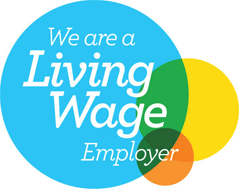Shared Parental Leave
 What does this mean for employers and employees?
What does this mean for employers and employees?
Shared Parental Leave (SPL) is a new legal entitlement which will be available for parents of children whose expected date of delivery or adoption begins on or after 5 April 2015. It will enable parents and adopters to share up to 50 weeks of leave which is currently restricted to the mother or “primary adopter.”
Parents are not obliged to share leave. The default position will still be 52 weeks maternity or adoption leave, 39 weeks paid and 13 weeks unpaid. Indeed, the initial two week period after the birth will remain a period of compulsory maternity leave for the birth mother.
The amount of leave is calculated using the mother’s 52 week allowance. If this is reduced then their partner or other parent can opt in to the SPL system and take any remaining weeks of maternity or adoption leave.
Also the partner/parent can opt in while the mother is still on leave so they are on leave together, but the mother must have given notice to her employer to reduce her maternity leave.
Eligible employees can stop and start their SPL and return to work in between SPL, with each parent able to submit up to three notices, booking periods of leave. A duty is placed on employers to ensure that their employees are not penalised for using their entitlement, or put under pressure to change or cancel leave.
Unpaid parental leave will continue to exist alongside this new shared parental leave. Under new proposals from 2013, this was extended from 13 – 18 weeks and is available to parents of all children up to the age of 18.
However, Additional Paternity Leave and Pay, available when the child is 20 weeks or above, will be abolished.
The Shared Parental Leave regulations are complex and in order to understand these there are new terms and tests all practitioners and business owners need to get to grips with. For example, who is an eligible parent? Sometimes only one parent will be eligible and even more confusingly although this only applies to the employed, a self-employed partner may contribute by passing the employment and earnings test to their employed partner.
Employees need to learn about the important steps they need to take to avail themselves of this right such as notifying their employer of their eligibility and booking their required leave. Also, employers need to know about their right to refuse discontinuous leave and what steps then need to be made by the employee.
Early discussion and preparations are key to this running smoothly as is flexibility to accommodate the changing needs of the employee but in a way that does not adversely affect the employer’s business.
Employers should consider having a Shared Parental Leave Policy to ensure consistency in responding to notifications. This policy can also be used to notify employees as to how they can apply for SPL to ensure employers are meeting the minimum statutory requirements.
If you need assistance please contact our employment team.
We will be adding advice sheets and FAQ’s to our website for both employers and employees – so watch this space.
We will also be running a new employment law campaign From Here to Paternity in early 2015. This follows on from our previous campaigns: Pregnant and Productive, Mind the Bump and From Here to Maternity. This will include offering a free advice helpline and seminars to ensure employers and employees are fully aware of their rights and responsibilities.


